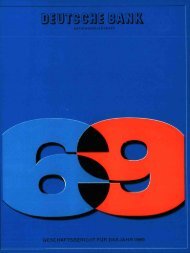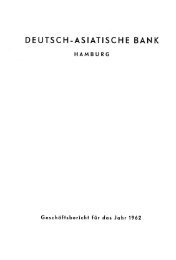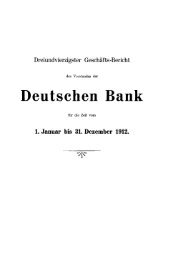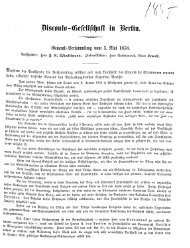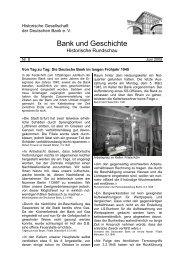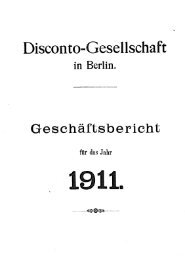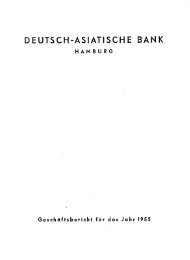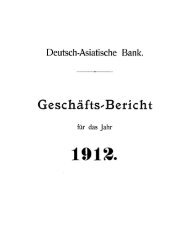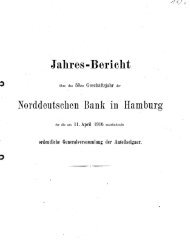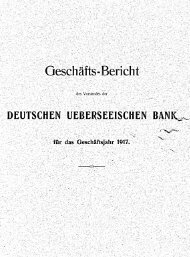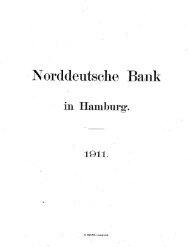Deutsche Bank AG - Historische Gesellschaft der Deutschen Bank e.V.
Deutsche Bank AG - Historische Gesellschaft der Deutschen Bank e.V.
Deutsche Bank AG - Historische Gesellschaft der Deutschen Bank e.V.
Create successful ePaper yourself
Turn your PDF publications into a flip-book with our unique Google optimized e-Paper software.
short-term interest rates were higher than long-term New approaches in debt strategy<br />
rates, which had not risen so steeplyiat the beginning<br />
of the year short-term rates had still been substantially<br />
lower.<br />
After declining in the previous year, the foreign<br />
commitments of the highly indebted developing<br />
countries increased again in 1989 (to C. $625 bn.).The<br />
payment difficulties of the countries concerned perlnterest<br />
rates rise aciain - worldwide<br />
In the other European indu~trial arid<br />
Japan, toot average interest for were for<br />
themost partappreciab'y higher than in the previous<br />
year In the U.S.A.. however. more mo<strong>der</strong>ate growth<br />
forecasts and the diminished risk of inflation led to a<br />
noticeable decline in short and long-term interest<br />
rates in The differente bemeen U'S.<br />
sisted. The prices for bank Claims on the secondary<br />
market continued to fall. The danger of default, up to<br />
complete irrecoverability. looks high. Without a substantial<br />
reduction of the debt burden many countries<br />
are unlikely to achieve satisfactory economic development<br />
The reorientation of the official debt<br />
strategy introduced by U.S. Treasury Secretary Brady<br />
in March 1989 takes this into account by focussing<br />
first arid foremost On the reduction of debts fo com-<br />
arid DM money market which at the beginning mercial banks through partial debt forgiveness, arid<br />
Of the year "Ood at almest four percentage iowering interest ratesfor countries wiiiing to reform.<br />
points, had completely disappeared by the end of the<br />
year; in the lang-termsegment it was well down.<br />
From strong dollar to strong D-Mark<br />
In 1989 the foreign exchange marketswere initially<br />
influenced by theverystrong dollar. From September<br />
onwards the D-Mark gained in value owing to<br />
changes in interest rates and business activity. As a<br />
result of the political upheavals in East Germany and<br />
East European countries the firming of the D-Mark<br />
gathered Pace towards the end of the year. The re-<br />
valuation of the D-Mark during 1989 was particularly<br />
marked against the yen (+20%) and sterling (+18%).<br />
The global (trade-weighted) external value of the<br />
D-Mark was also up slightly in real terms; however,<br />
thisdid not make upfor the consi<strong>der</strong>able losses in the<br />
previous year.<br />
uss h. Japan<br />
bxol>cwi~(FCJ 1<br />
USA<br />
100-



